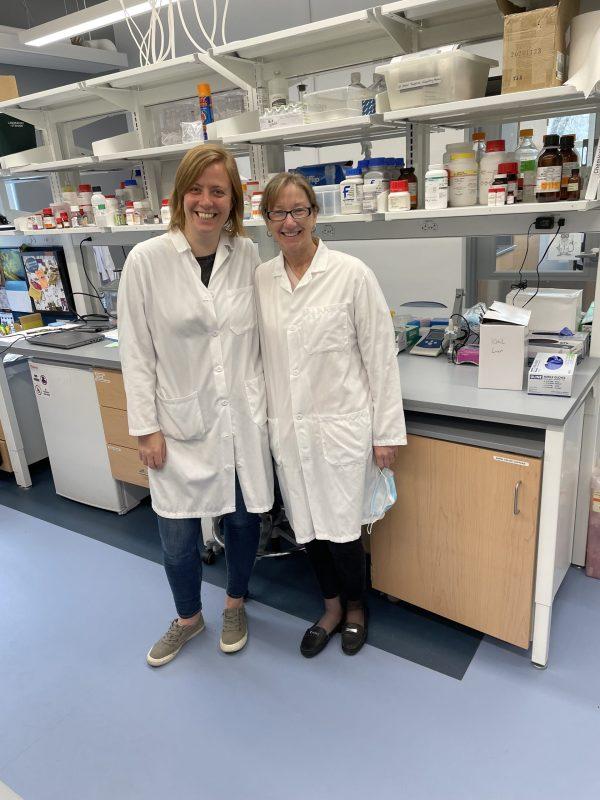-
About
- Leadership & Faculty
- News & Events
-
Academics
- Graduate
- Advanced Clinical Training
- Continuing Education
-
Student Life
-
-
Accommodations
- Our Campus
-
Accommodations
- Graduate Resources
-
-
Research
-
Hospitals & Clinics
- Emergency Care
- Hospital Services
-
Community Outreach
- Volunteer
Can Substance Abuse be Passed to Future Generations?
Research suggests genetic links

It has long been known that substance use disorder and addiction result from a complex interplay of genetic and environmental factors. Given the nationwide magnitude of the opioid crisis, determining an effective intervention is a priority among those who study the science of addiction.
Two Cummings School researchers—Fair Vassoler, assistant professor of biomedical sciences, and Elizabeth Byrnes, Ph.D., professor of biomedical sciences—have been studying the mechanisms of addiction through the lens of transgenerational epigenetics. The basic premise of this field reveals that environmental exposures can physically alter the way DNA is expressed in one’s offspring, and in future generations.
Vassoler and Byrnes’ research has involved administering opioids and other potentially addictive substances, including cocaine, to adolescent rats. When the rats were mated as adults, it became clear how that earlier exposure impacted addictive tendencies in their offspring.
The scientists found that if the rats’ fathers had been exposed to opioids, then the rats were more likely to ingest opioids and worked harder to obtain opioids. However, they were less likely to choose cocaine. Conversely, if the rats’ mothers had taken opioids, their babies were less likely to choose opioids and more likely to consume cocaine.
“After documenting distinct offspring effects following adolescent drug exposure in males and females, we are now using this model to identify differences in the embryonic and/or postnatal development that are associated with either an increased or decreased risk of adult substance use liability,” says Byrnes.
The takeaway is that our environment and that of our ancestors can play a role in shaping an individual at a molecular level, by changing the way the DNA works without changing the DNA itself. The researchers acknowledge that these are only probabilities and many other viable factors exist. For example, if an individual lacks access to certain drugs, they will not have an opportunity to engage in substance use disordered behaviors. Providing positive environmental enrichment during a child’s development may reduce inborn addictive tendencies.
Byrnes and Vassoler hope that their research will eventually translate into an approach that can mitigate the likelihood of addiction in people.
“I hope this research can identify systems that are vulnerable to environmental epigenetic effects and, along those lines, systems that are receptive to positive environmental impacts,” Vassoler explains. “If we have a better understanding of these systems, we can help improve education and outreach to give every individual the best chances possible for success in life.”